Black Tartar on Teeth: A Common Dental Problem Explained (pictures)
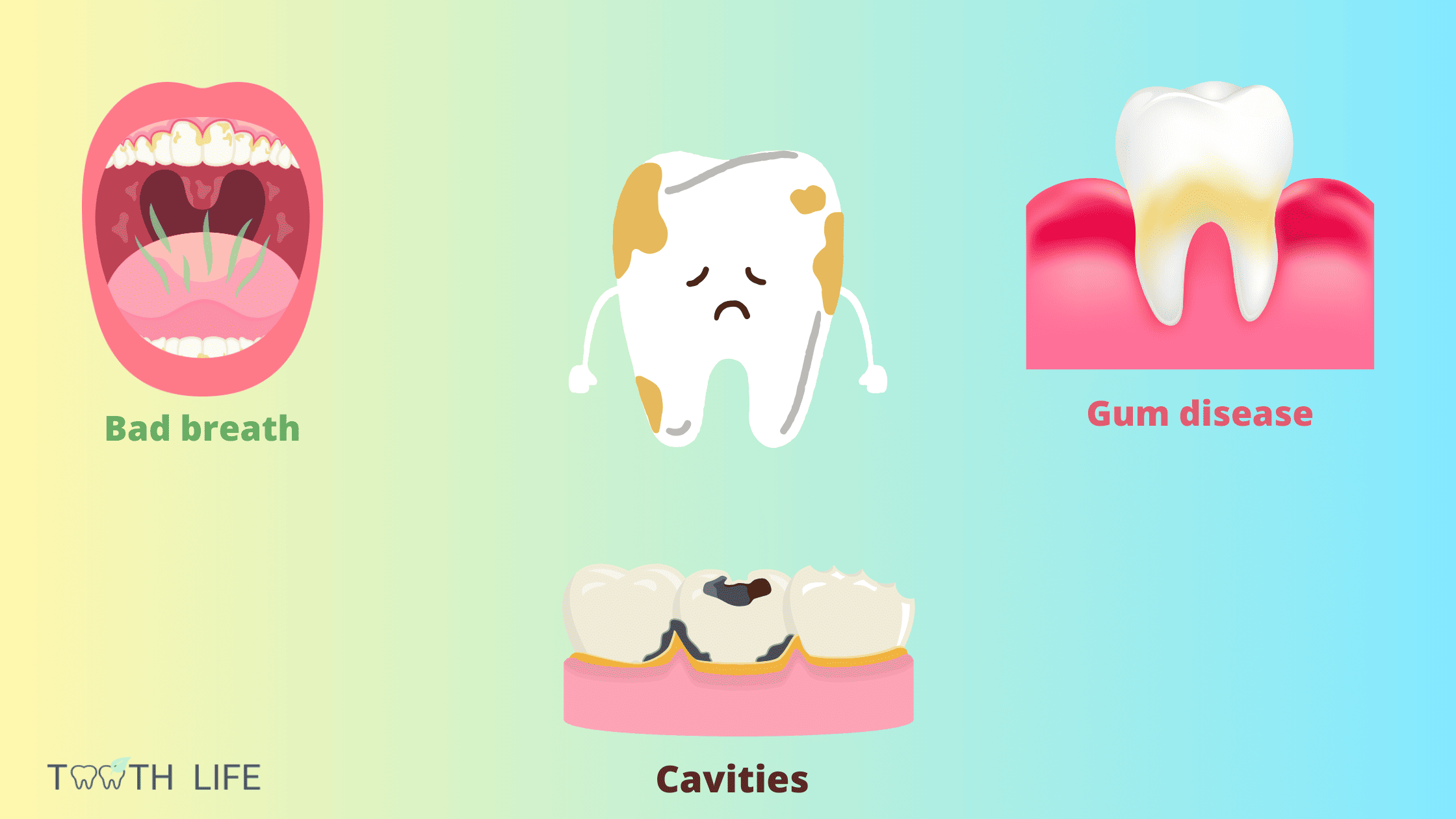 Have you ever noticed black buildup on your teeth near the gum line and wondered what it could be? You may have black tartar, a common dental problem that affects many people.
Have you ever noticed black buildup on your teeth near the gum line and wondered what it could be? You may have black tartar, a common dental problem that affects many people.
It can be unsightly and lead to more serious oral health issues if left untreated.
However, before assuming it's black tartar, it's important to rule out other oral conditions that may look similar. These include tooth discoloration, black line stains, and cavities.
In this blog post, we will explore what black tartar is, how it forms, its complications, and most importantly, how to prevent and treat it.
1. How do tartar and plaque form?
2. How can tartar turn black?
3. Other conditions that may look like black tartar:
4. How can tartar affect my oral health?
5. How to get rid of black tartar?
How do tartar and plaque form?
If you have noticed some dark or yellowish spots on your teeth, you may be wondering what they are and how to get rid of them.These spots can be tartar, often a telltale sign of poor oral hygiene and gum disease. It looks like a hard, sticky substance that covers the teeth and persists even after a thorough brushing. But how does tartar form in the first place?
To answer these questions, we need to go back to the source of tartar: plaque.
The mouth contains many tiny organisms, making it the second most microbe-rich part of the body after the gut (1).
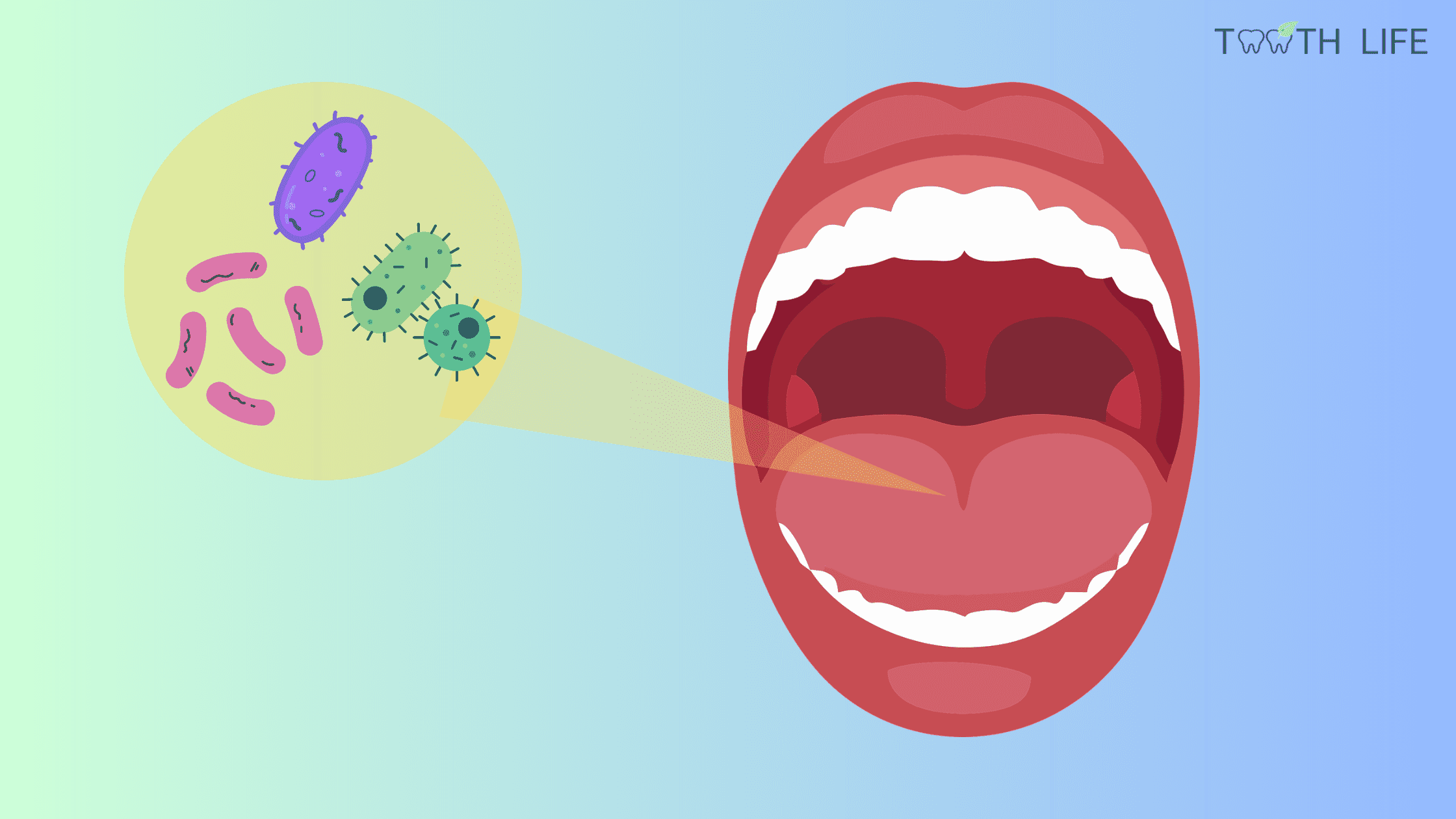
In order to survive, bacteria create what is called Biofilm or Plaque. It is a soft, thin film that constantly builds up on the teeth' surface. It starts to form after only a few minutes of brushing and flossing.
Plaque is made up of billions of bacteria that feed on the food and drinks we consume. But, unlike what you might think, these are not all bad. In fact, most of them help us with digestion, immunity, and fighting harmful microbes. However, when plaque accumulates on the teeth, it becomes a problem.
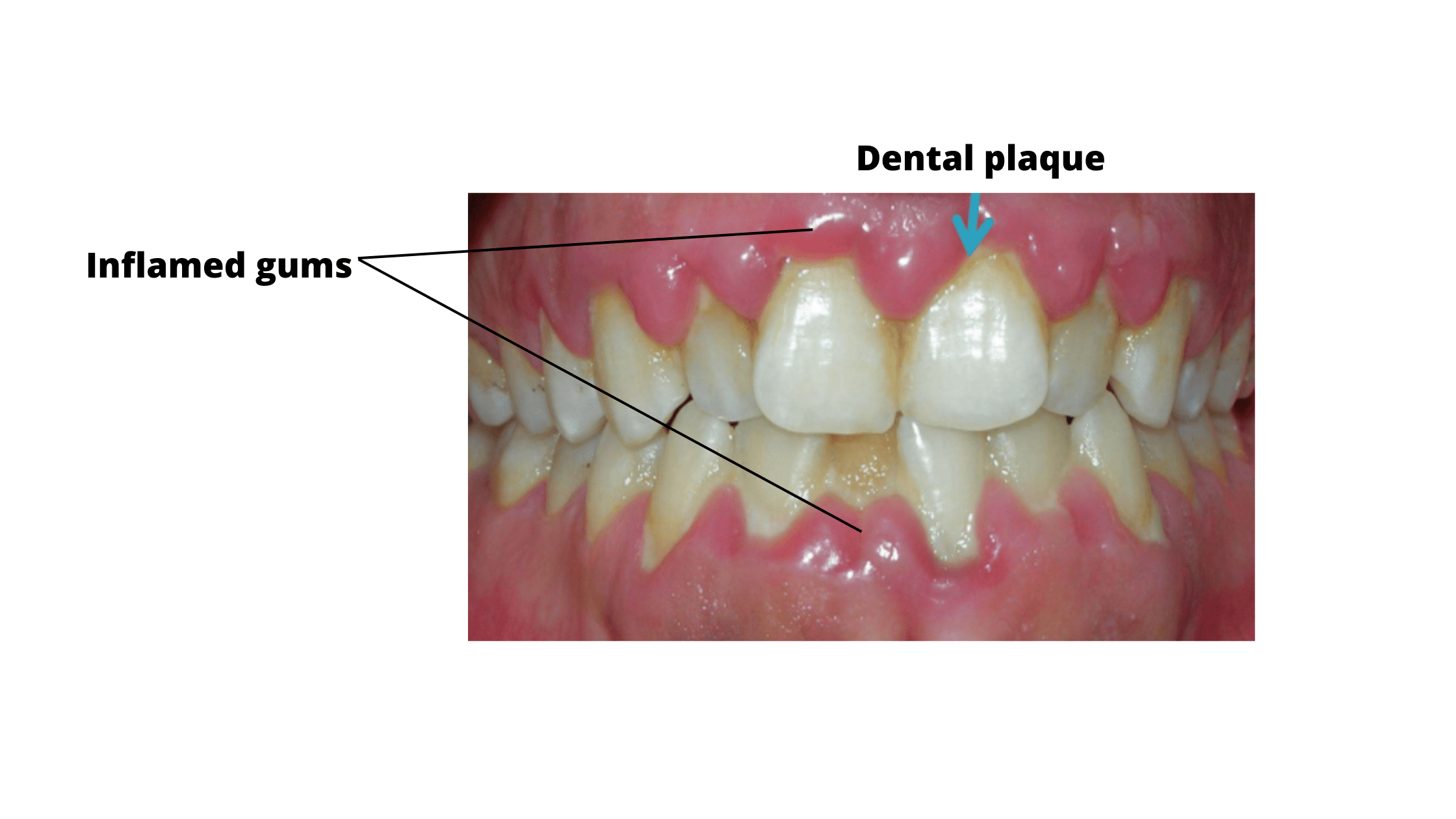 After a few days without brushing, bacteria grow and multiply, forming a thick, visible yellowish plaque layer. If not removed, plaque can harden into tartar. This happens when plaque absorbs minerals from saliva or food and calcifies.
After a few days without brushing, bacteria grow and multiply, forming a thick, visible yellowish plaque layer. If not removed, plaque can harden into tartar. This happens when plaque absorbs minerals from saliva or food and calcifies.
Tartar is much more difficult to remove than plaque. It can also change color depending on a number of factors, ranging from yellow to brown to black.
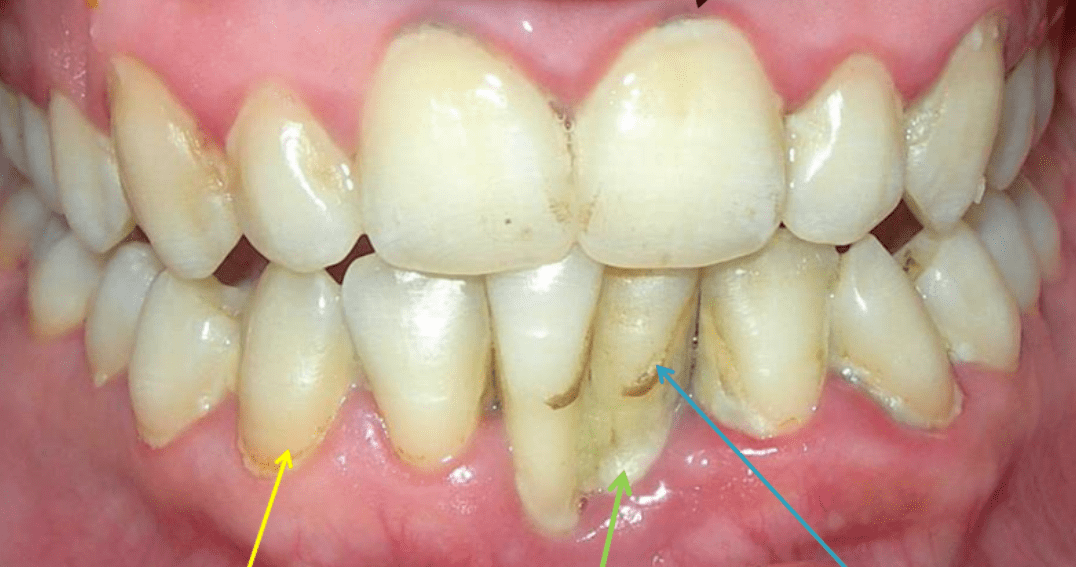
Yellow-brown tartar build-up on the teeth
How can tartar turn black?
Tartar can take on a yellowish or blackish color, depending on its type and location. There are two types of tartar: Supragingival and Subgingival.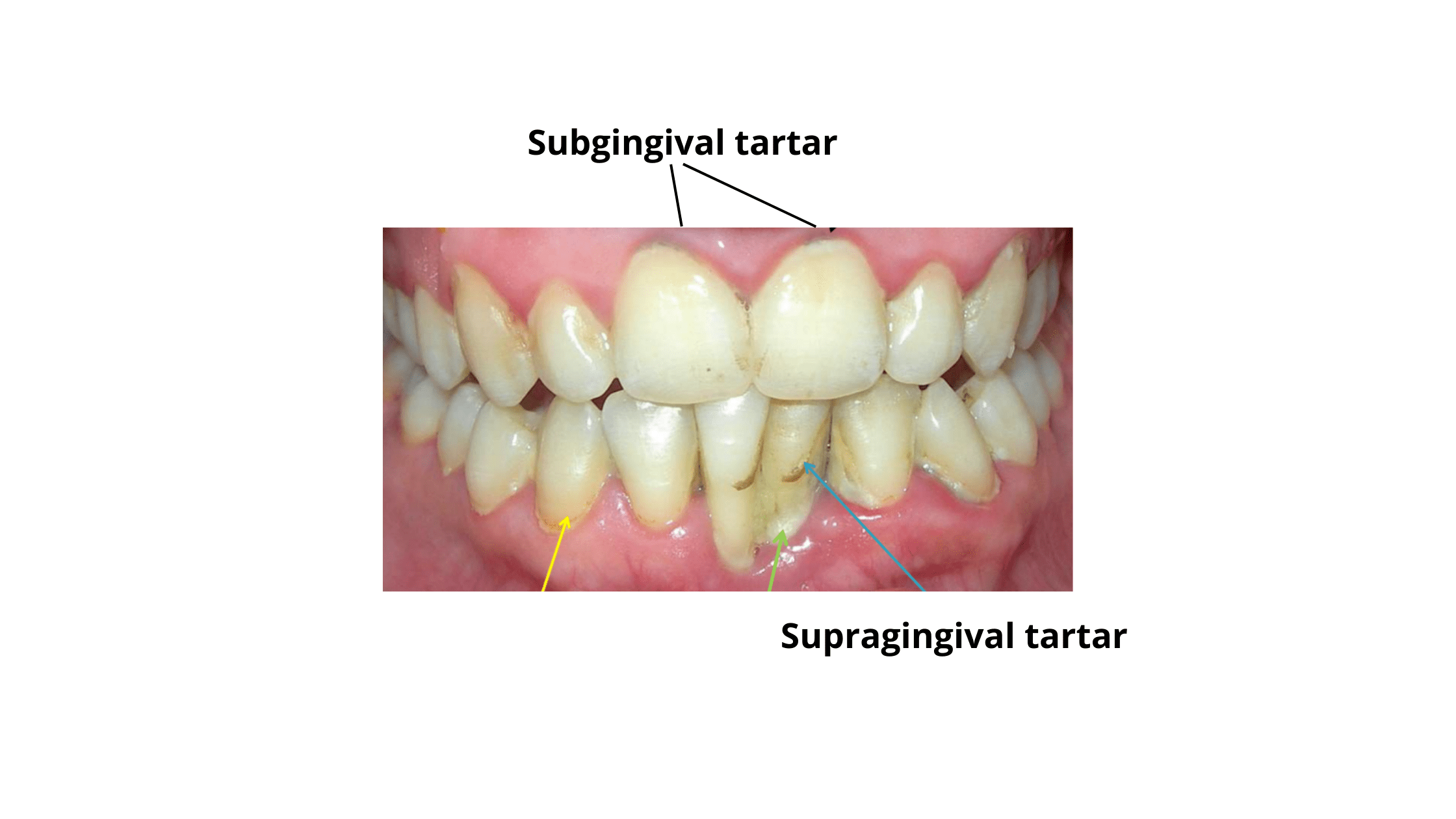
1. Supragingival tartar:
Supragingival tartar is the one that covers the visible surfaces of your teeth. It can turn grayish-black over time due to exposure to certain substances that stain it. These include smoking, coffee, tea, chocolate, and other dark-colored foods and drinks. Tartar is porous and can absorb these pigments easily.
2. Subgingival tartar: The black stuff around the gum line
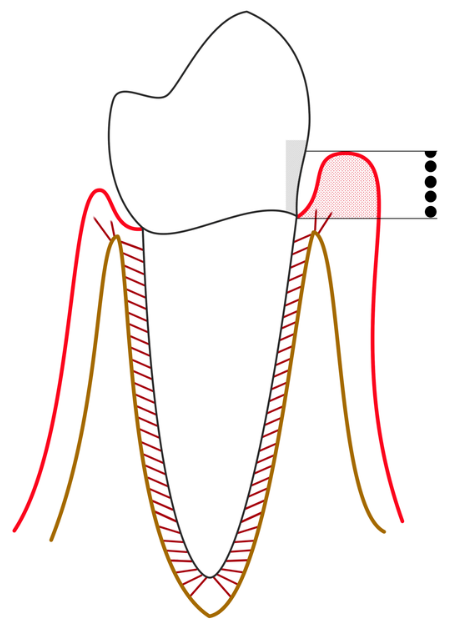
Tartar can also extend deep into the gum line. We call it Subgingival Tartar.
Between our teeth and gums is a narrow gap called the gingival sulcus. It's a perfect spot for bacteria and plaque to gather because it's sheltered from the cleaning action of saliva and toothbrush.
As tartar and plaque accumulate on the gum line, they cause irritation and inflammation. You may experience symptoms like bleeding, swelling, and sensitivity when you eat.
Tartar in this area is always darker, usually brown or black in color. This is because it mixes with the blood pigments from the inflamed tissues.
Subgingival calculus is also the stickiest and most stubborn, making it very difficult to remove. If not cleaned away, it can enlarge the gap between your tooth and gum, causing what is called periodontitis.
Other conditions that may look like black tartar:
Before you diagnose yourself with black tartar, it's important to rule out certain conditions that may have a similar appearance. These include cavities, black lines, and tooth discoloration.1. Black tartar vs. Black lines:
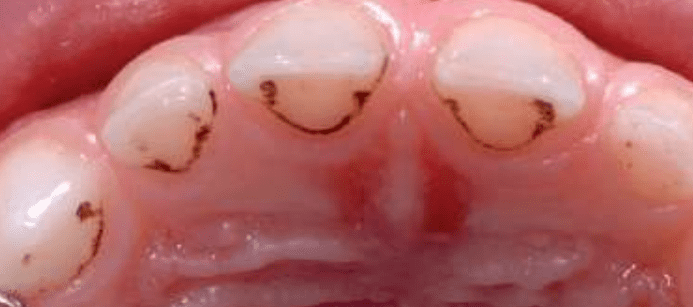
Black line stains
Black Tartar:
- Hard, black deposit on the teeth
- Caused by the accumulation and hardening of plaque
- It can lead to serious dental problems if left untreated
Black Lines on Teeth:
- Thin, dark lines that run along the gum line
- Caused by chromogenic bacteria that produce pigments
- More common in children and people with good oral hygiene
- Not harmful and can be removed by a dentist or hygienist (3)
2. Black tartar vs. Cavities:
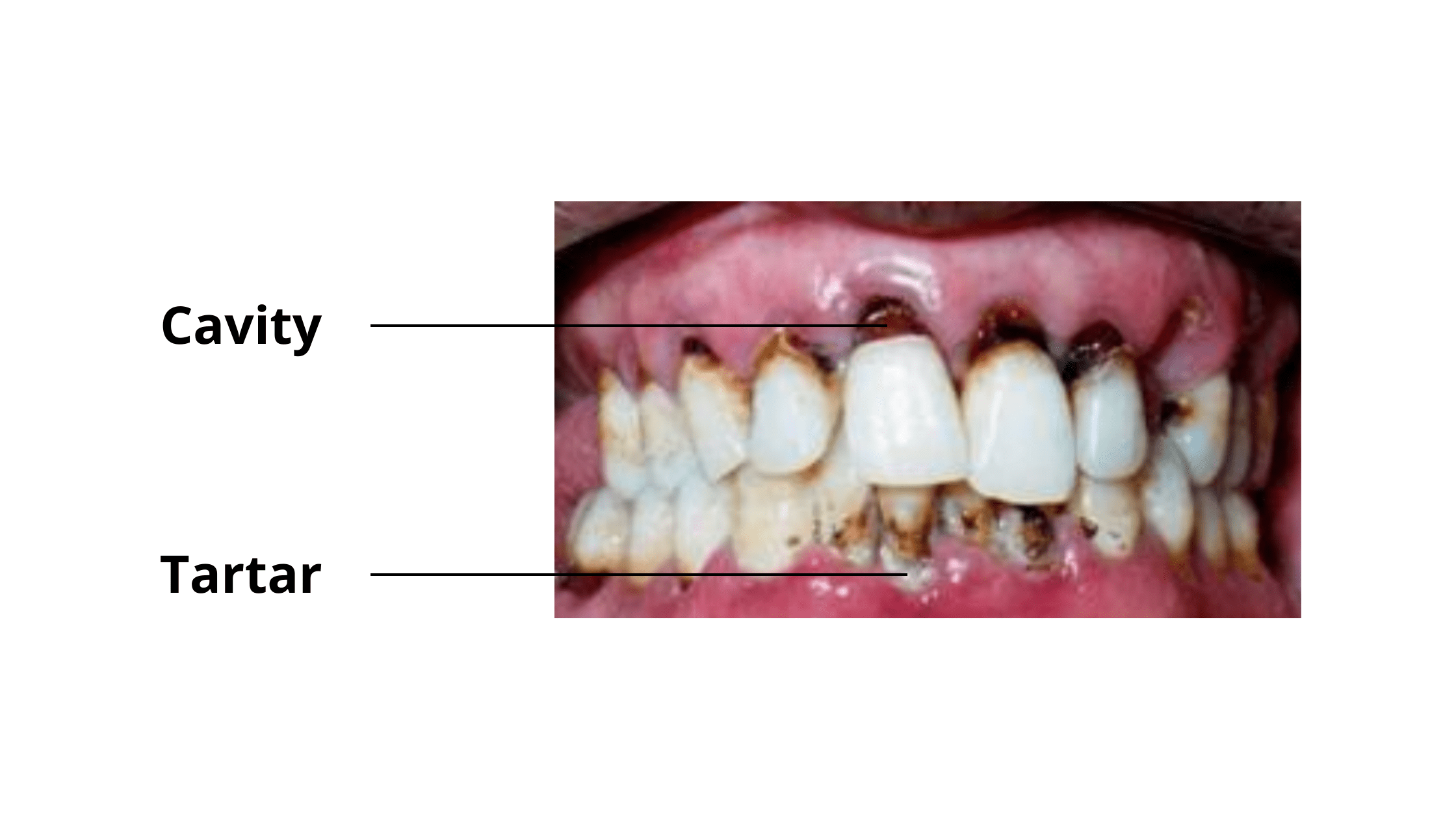
Black tartar vs. Cavities
Tartar:
- Tartar is a hard, mineralized buildup on teeth that can be yellow or brown in color
- Tartar is caused by the buildup of plaque that has not been removed
- Tartar is not painful
- Tartar doesn't cause holes in teeth
Cavities:
- Cavities are holes in your teeth that can appear as dark spots or patches on your teeth
- Cavities are caused by acids produced by bacteria in dental plaque
- Cavities can be painful and sensitive to hot, cold, or sweet stimuli
- Cavities need to be filled by a dentist to prevent further damage
3. Black tartar vs. Black stains on teeth:
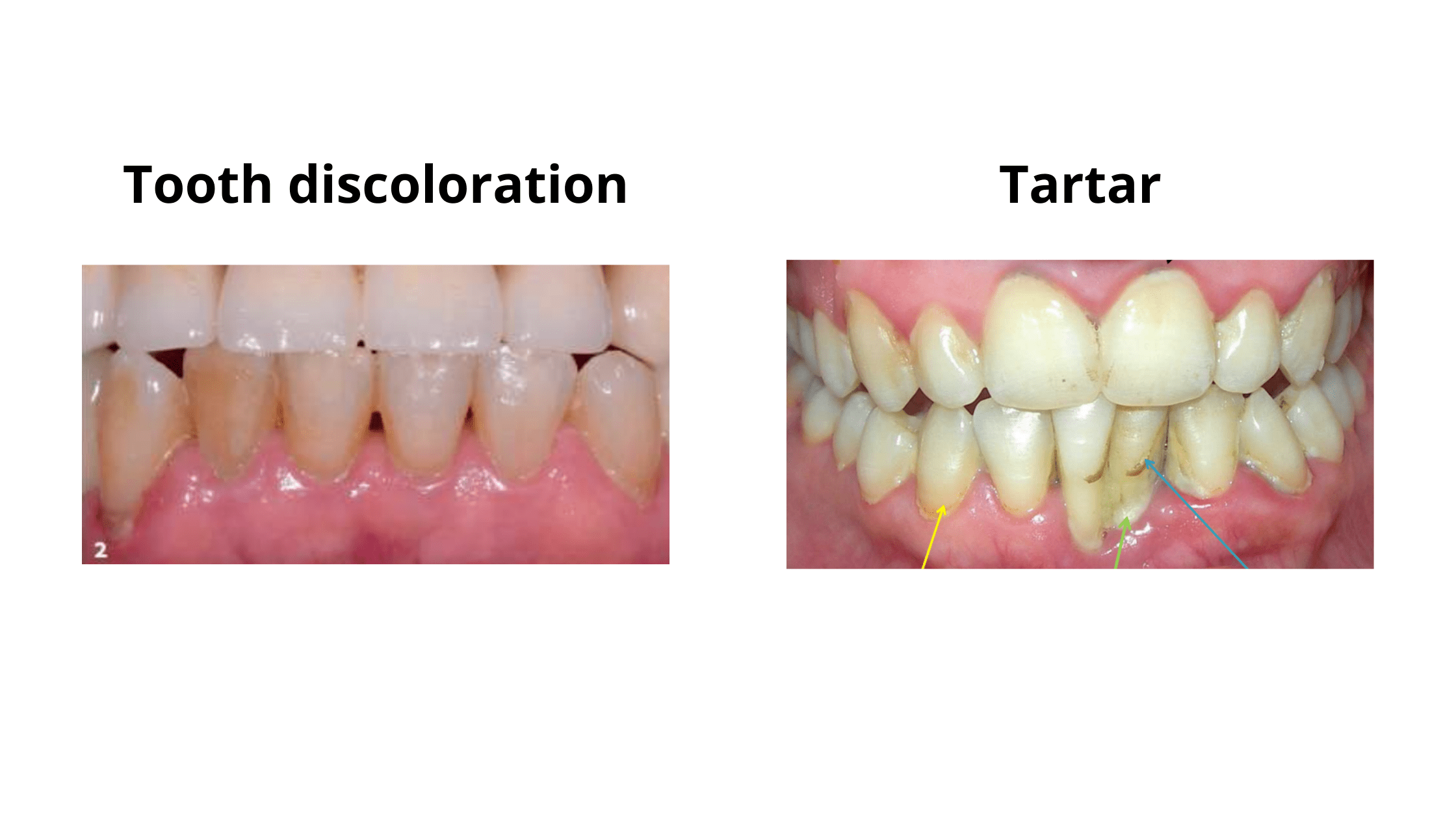
Black Tartar:
- Black tartar is not just a cosmetic concern. It can cause gum disease and tooth loss if left untreated.
- Black tartar builds up on the teeth's surface and does not sink deep into the tooth.
Black stains on teeth:
- Stains are superficial discoloration that affects the enamel of your teeth
- Black stains on teeth are caused by external factors such as smoking, coffee, tea, or certain medications
- They do not affect the health of your teeth, but they can make them appear darker and affect their look
- They can be removed by whitening treatments
How can tartar affect my oral health?
If left untreated, tartar can be particularly harmful to oral health, as it can lead to several problems, including:
- Cavities: Tartar is not only stubborn to get rid of. But it also makes cleaning difficult and promotes plaque retention, creating a never-ending cycle. As plaque builds up, bacteria make more acid, which raises the risk of cavities.
- Discolored teeth: Tartar can stain your teeth, making them look dull and unattractive. This can affect your appearance and self-confidence.
- Bad breath: Tartar harbors bacteria that produce foul-smelling gases, which can give you bad breath. Bad breath can also be a sign of gum disease or other oral infections caused by tartar.
- Tooth loss: Tartar irritates your gums and causes inflammation, which can lead to gingivitis (mild gum disease) or periodontitis (severe gum disease). Gum disease can make your gums bleed, recede, and become infected. It can also damage the tissues and bones that support your teeth, causing them to become loose and fall out.
- Effects beyond your mouth: Tartar and gum disease can also affect your overall health, as the bacteria in your mouth can enter your bloodstream and cause inflammation in other parts of your body. Some studies have linked oral bacteria to heart disease, diabetes, stroke, and pregnancy complications. (4)
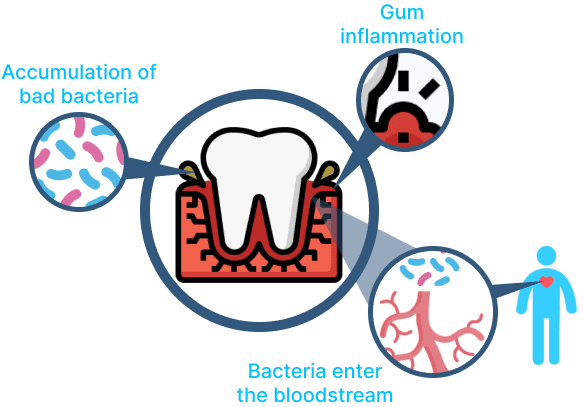
How to get rid of black tartar?
The best way to fight black tartar is to prevent it from forming in the first place.You can easily control and remove plaque buildup on your teeth with simple at-home oral hygiene habits. This will help you remove plaque before it turns into tartar.
On the other hand, black tartar does not go away without professional assistance. You need to visit your dentist regularly to have it removed with special tools. This process is called scaling.
However, when the buildup of plaque and tartar goes deep into your gum line and starts damaging your tissues, you might require root planing. This procedure deeply cleans the tooth beneath the gum line.
In addition to seeing your dentist, you can also prevent black tartar from forming by following these tips:
- Brush your teeth twice a day for two minutes with a soft-bristled toothbrush and a fluoride toothpaste that has tartar-control ingredients. Also, try to angle your toothbrush 45 degrees toward the gum line. This will help clean your gums while also promoting good blood circulation.
- Floss your teeth daily to remove plaque from between your teeth and under your gum line.
- Avoid smoking and tobacco products and limit your intake of foods that can stain your teeth.
- Drink plenty of water to keep your mouth hydrated and wash away food particles.
- Oral microbiome: Unveiling the fundamentals https://www.ncbi.nlm.nih.gov/pmc/articles/PMC6503789/
- Gingival inflammation and subgingival calculus as determinants of disease progression in early-onset periodontitis https://pubmed.ncbi.nlm.nih.gov/9543194/
- Black staining: an overview for the general dental practitioner https://www.nature.com/articles/s41415-022-4345-0
- Oral microbiota in human systematic diseases https://www.nature.com/articles/s41368-022-00163-7
